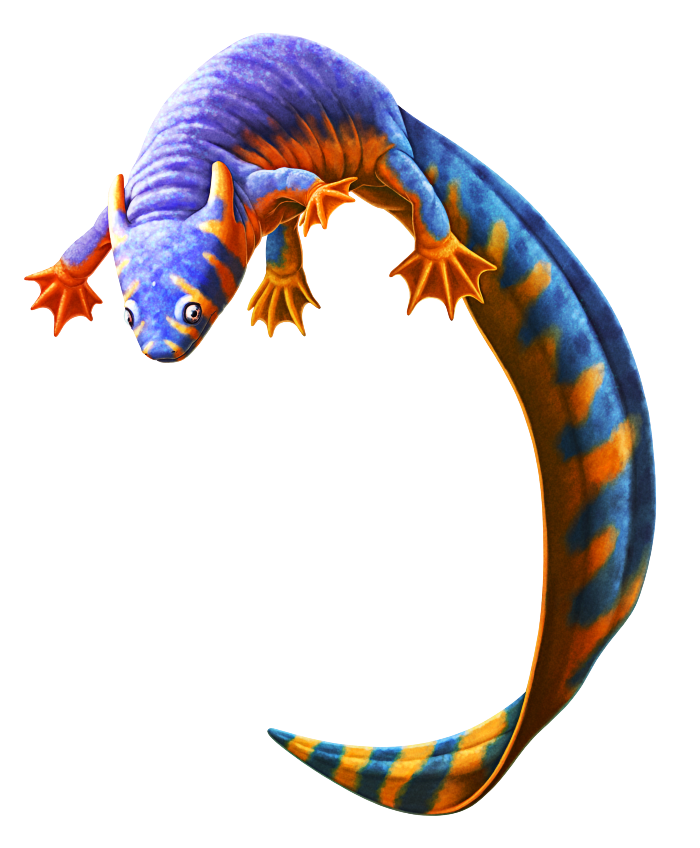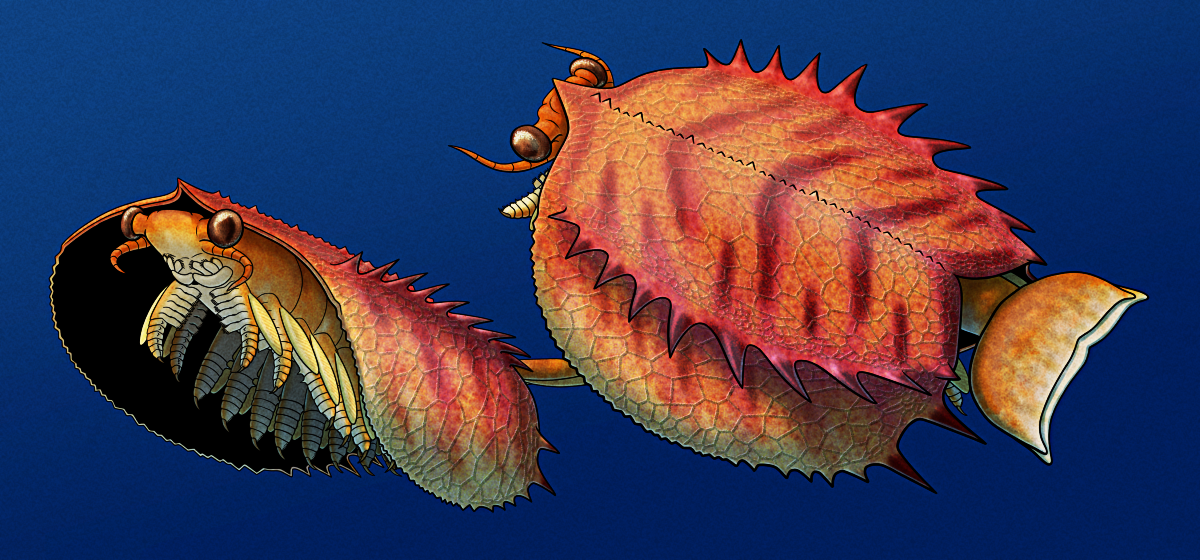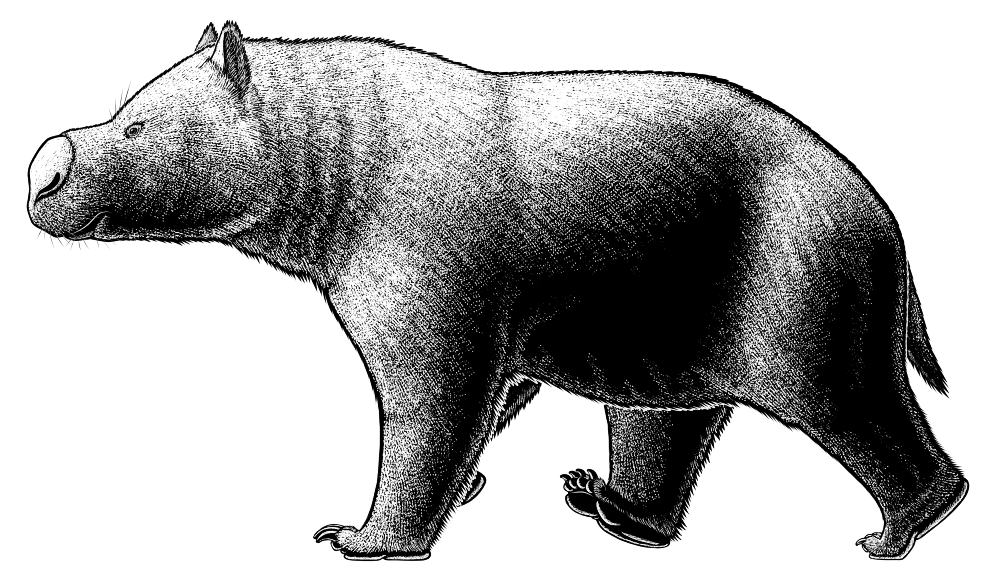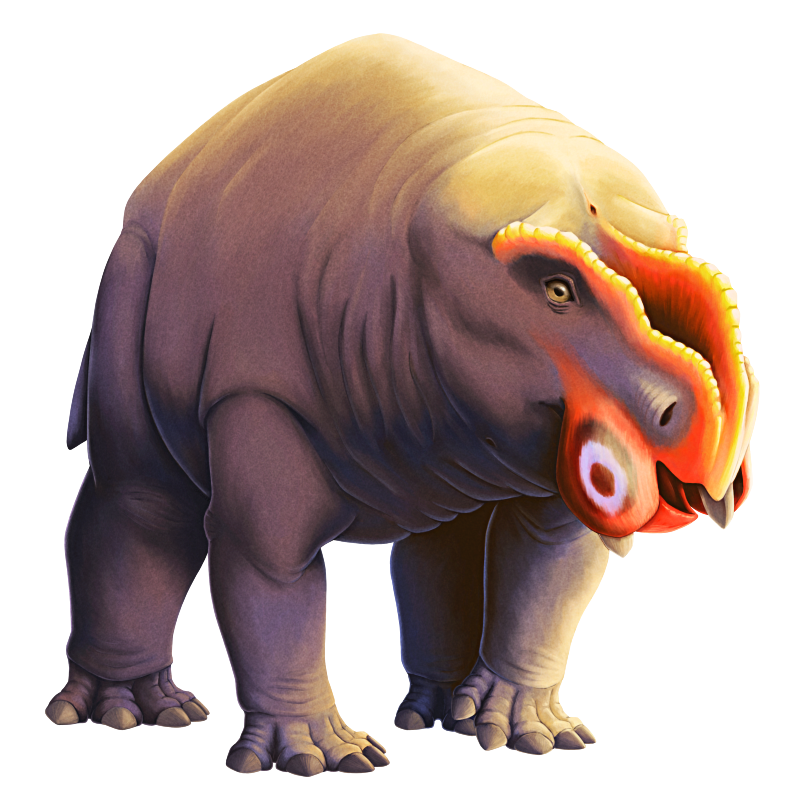Keraterpeton galvani here was part of a group of amphibian-like early tetrapods called lepospondyls.
Living in what is now southern Ireland during the Late Carboniferous, about 318-314 million years ago, this 30-40cm long (~1′-1’4″) fully aquatic animal was the earliest known member of the diplocaulid lineage (although its skull was much less elaborately modified than its famous boomerang-headed relative Diplocaulus).
It had a broad short-snouted head with eyes set far forward, and a pair of backwards-pointing bony “horns” at the back of its skull. Its forelimbs were smaller than its hindlimbs, and unlike most other diplocaulids it had five fingers on its hands instead of four.
Its vertically flattened paddle-like tail was also around twice as long as the rest of its body, and was probably its main source of propulsion in the water.
Keraterpeton seems to have been quite numerous in the coal swamps it inhabited, representing the most common species preserved in the Irish Jarrow Assemblage site – a location where fossil specimens were uniquely “cooked” and partially replaced with coal during the fossilization process.




